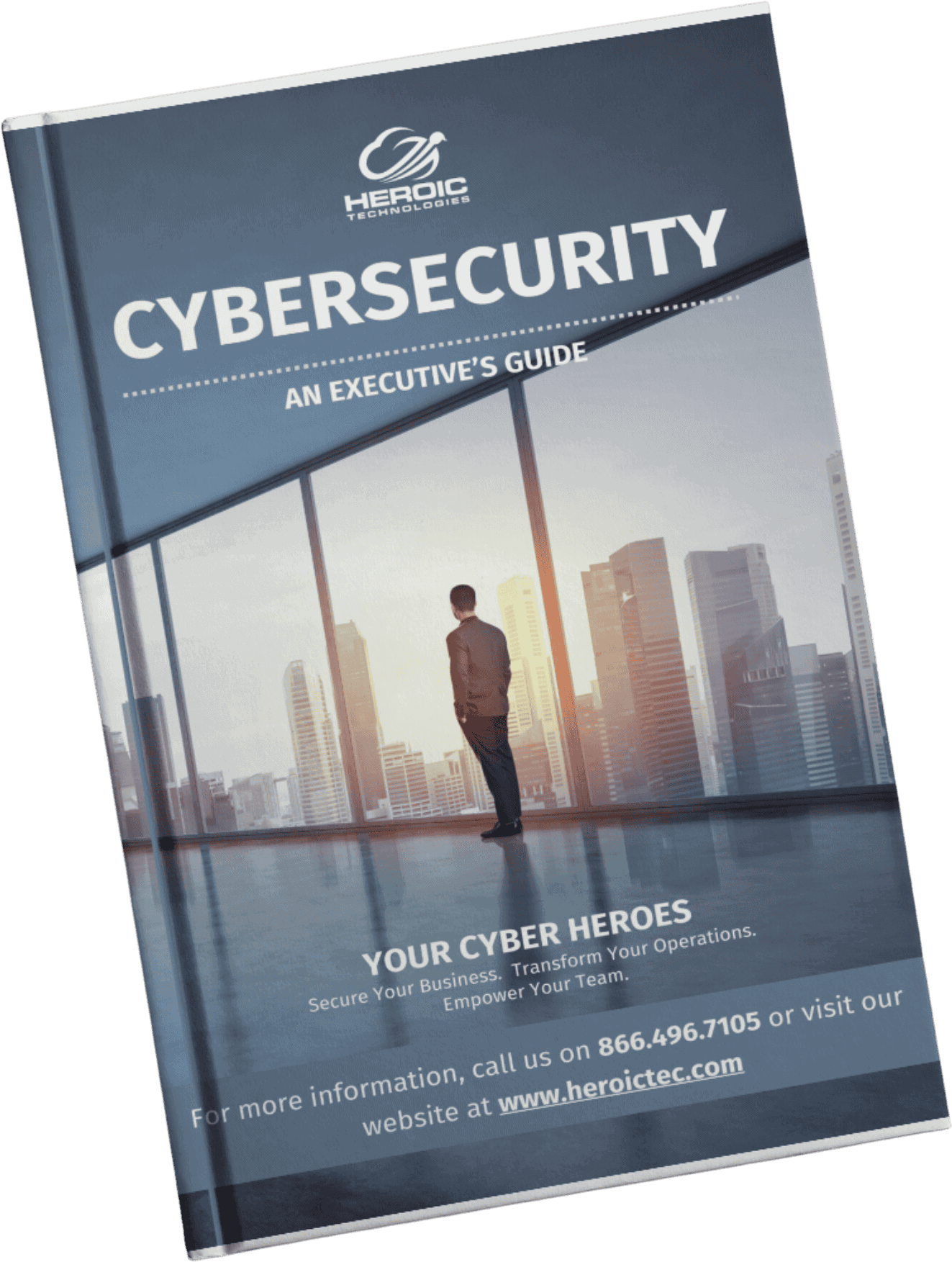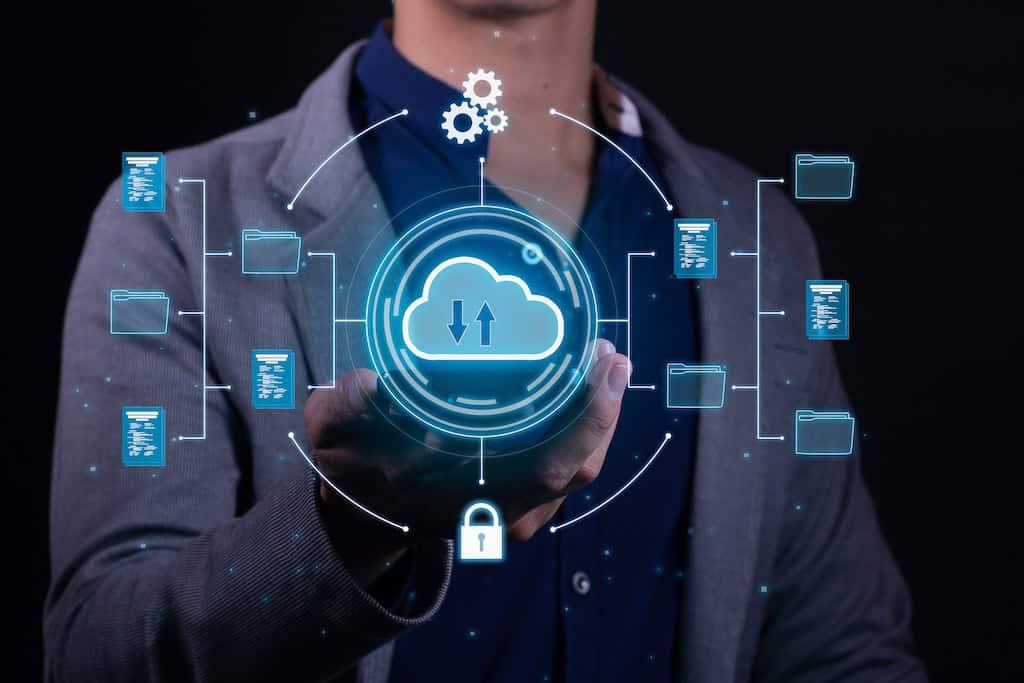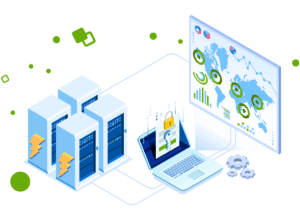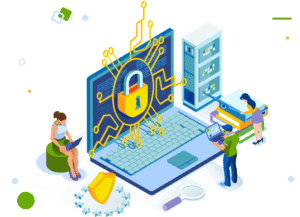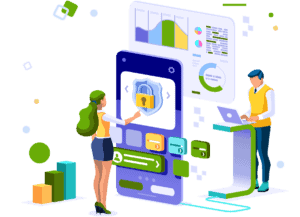Managing IT Infrastructure for Universities and Schools: Guide and Best Practices for a Secure Network
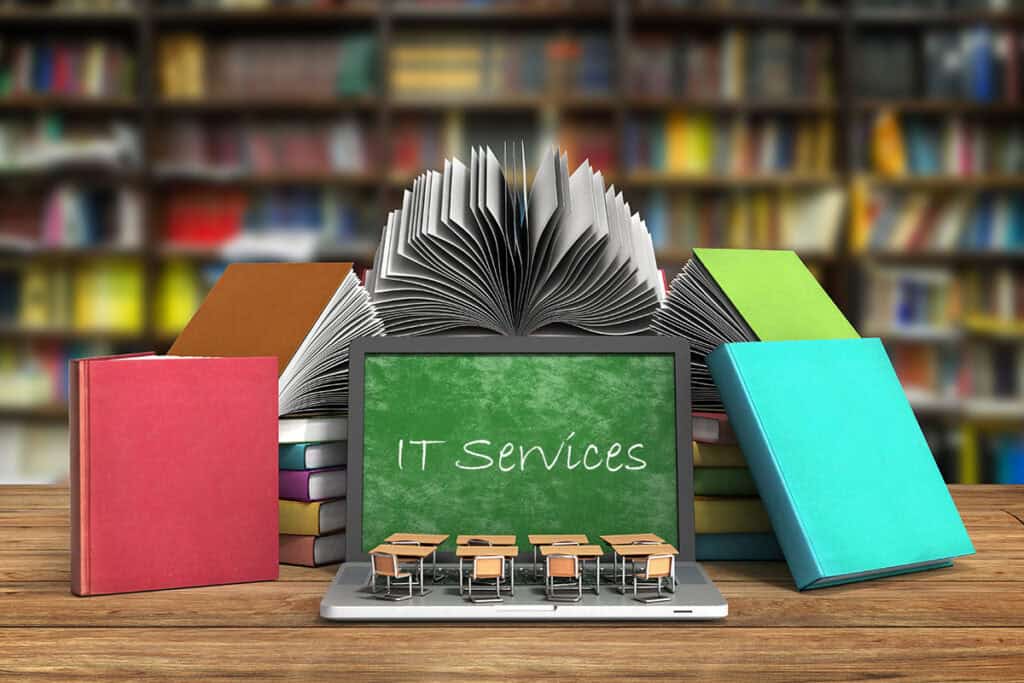
IT infrastructure for schools plays a critical role in fostering effective learning environments.
A solid IT infrastructure enables schools and universities to adapt to rapidly changing educational technology demands. From improving communication among staff and students to providing access to countless resources, robust infrastructure supports innovative teaching methods.
As challenges like budget constraints and outdated technologies persist, prioritizing IT infrastructure becomes vital for achieving success for all educational institutions.
Assessing IT Infrastructure Requirements in Education
Educational institutions face the ongoing challenge of assessing current infrastructure to identify gaps and inefficiencies. A thorough review of existing systems helps gain a grasp of the IT needs for the school. This assessment involves several key aspects:
1. Identifying Outdated Technology
Many schools operate on legacy systems that hinder performance and complicate operations. Recognizing these technologies is the first step toward modernization.
2. Recognizing Shortcomings
Schools must evaluate their infrastructure’s capabilities against current educational demands. Common shortcomings include insufficient bandwidth, slow processing speeds, and lack of integration among educational tools.
3. Budget Constraints
Financial limitations often prevent schools from upgrading their technology. Knowing budget constraints allows for tailored solutions that maximize available resources while still meeting educational requirements.
Customizing solutions to fulfill unique educational requirements is crucial. Tailored approaches can enhance both teaching and learning experiences. Considerations may include:
- Integrating collaborative tools that facilitate communication among students and educators.
- Implementing scalable networks capable of supporting increased device usage and online learning platforms.
- Adopting hybrid solutions that balance on-premises resources with cloud capabilities, optimizing performance without straining budgets.
Tackling Cybersecurity Risks in Educational Environments
Educational institutions face a wide range of cybersecurity threats that can compromise sensitive data and disrupt learning. It’s essential to know these risks and implement effective strategies.
Common Cybersecurity Risks:
- Phishing Attacks: Cybercriminals often target schools through deceptive emails designed to steal credentials.
- Ransomware: This malicious software encrypts files, demanding payment for access. K-12 schools are particularly vulnerable due to budget constraints.
- Data Breaches: Unauthorized access to student records can lead to identity theft and severe legal consequences.
- Inadequate Security Measures: Outdated systems and lack of security protocols increase susceptibility.
Strategies for Mitigation:
- Implement Comprehensive Security Frameworks: Adopting multi-layered security measures protects against various threats.
- Educate Staff and Students: Regular training sessions on recognizing phishing attempts and safe online practices empower users.
- Regular Software Updates: Keeping systems updated guarantees vulnerabilities are patched promptly, reducing risk exposure.
- Utilize Advanced Tools: Deploying firewalls, intrusion detection systems, and anti-malware software enhances overall security posture.
Upgrading Legacy Systems for Improved Performance and Security
Outdated technology poses significant risks to educational institutions. Legacy systems often lack support for modern applications, creating vulnerabilities that can compromise security and hinder operational efficiency. The dangers associated with these systems include:
- Increased Security Risks: Older software may not receive regular updates, leaving them susceptible to cyberattacks.
- Performance Limitations: Legacy systems can slow down productivity, leading to frustration among staff and students.
- High Maintenance Costs: Continuing to repair outdated technology can drain budgets, diverting funds from more critical educational needs.
Upgrading infrastructure provides various advantages, such as enhanced performance, improved security measures, and cost savings in the long run. To efficiently modernize outdated systems, consider the following steps:
- Assessing Current Infrastructure: Conduct a thorough evaluation of existing systems to identify gaps in performance and security.
- Understanding IT Needs for Schools: Collaborate with stakeholders to determine specific requirements and prioritize upgrades based on urgency and impact.
- Developing a Modernization Plan: Create a phased approach that outlines short-term and long-term goals while minimizing disruptions during implementation.
Future-Proofing Educational Technology Investments
Future-proof IT infrastructure is vital for educational institutions. Implementing the following methods can guarantee the durability of IT investments:
1. Assessment of Current and Future Needs
Regularly evaluate existing systems and anticipate future requirements.
2. Integrating Scalable Technology Solutions
Adopt technologies that can grow alongside your institution. Scalable solutions allow for increased capacity and functionality without the need for complete overhauls. This flexibility supports initiatives like personalized learning experiences and data-driven decision-making.
3. Benefits of a Hybrid Cloud Strategy
Embrace hybrid cloud computing in education to optimize resources effectively. This strategy combines on-premises systems with cloud solutions, allowing institutions to:
Reduce costs by utilizing cloud services for variable workloads.
Enhance performance through efficient resource allocation.
Improve security by maintaining sensitive data on-premises while leveraging the cloud for less critical applications.
Implementing Cloud Solutions in Education: Overcoming Challenges and Maximizing Benefits
Cloud computing in education is changing how schools manage resources, deliver content, and interact with students. Here are some of the advantages that cloud technologies offer to educational institutions:
Benefits of Cloud Technologies for Educational Institutions
- Scalability: Institutions can easily adjust their resource allocations based on fluctuating demands, accommodating seasonal enrollment changes.
- Cost Efficiency: Reduces the need for upfront investments in physical infrastructure. Pay-as-you-go models allow schools to pay only for what they use.
- Enhanced Collaboration: Cloud-based tools facilitate real-time collaboration among students and educators, fostering an interactive learning environment.
Hybrid cloud solutions provide a practical approach to managing both on-premises and cloud workloads. This model allows educational institutions to:
- Utilize Existing Infrastructure: Schools can leverage their current systems while gradually integrating cloud services, minimizing disruptions.
- Optimize Resource Allocation: Sensitive data can remain on-premises, while less critical applications can operate in the cloud, balancing performance with security needs.
Data transfer challenges often arise during the adoption of cloud solutions. To address these issues:
- Implement Structured Migration Plans: A phased approach guarantees that data is transferred systematically, reducing chances of loss or corruption.
- Adopt Data Compression Techniques: Compressing data before migration can speed up transfer times and minimize bandwidth usage.
Prioritizing Network Security with Best Practices and Advanced Tools
A robust network security for universities is critical for today’s educational institutions. A comprehensive defense strategy protects sensitive data while maintaining trust among students, staff, and parents. Key components of this strategy include:
1. Zero-Trust Models
Every user and device must be authenticated and authorized, regardless of their location within the network. This approach minimizes the risk of unauthorized access and provides a more controlled environment for sensitive information.
2. Regular Assessments
Conducting frequent evaluations of network security measures is integral . These assessments help identify vulnerabilities and areas needing improvement, so your defenses evolve alongside emerging threats.
Best practices for school cybersecurity involve:
Layered Defense Strategies:
- Implement multiple security layers such as firewalls, intrusion detection systems, and antivirus software. This multi-faceted approach fortifies your network against various attack vectors.
User Education:
- Training staff and students on cybersecurity awareness can reduce risks. Educating users about recognizing phishing attempts and safe online behavior strengthens your human firewall.
Advanced Security Tools:
- Utilize state-of-the-art technologies like AI-driven threat detection systems that analyze patterns to identify potential breaches before they occur.
Using Advanced Security Tools and Strategies to Protect Sensitive Information
Educational institutions must prioritize the protection of sensitive information. Deploying advanced security tools is vital in creating a strong defense system against data breaches. Here are some key strategies:
1. Data Encryption
This technique transforms sensitive data into unreadable formats, accessible only to authorized users with decryption keys. Implementing encryption across all data storage and transmission channels protects student records, financial information, and other critical data.
2. Access Control
Establishing strict access control measures guarantees that only authorized personnel can view or modify sensitive information. Role-based access controls limit user permissions according to their responsibilities within the institution. This reduces the risk of unauthorized access and potential data leaks.
Meeting compliance standards related to student data protection is a must for all educational organizations. Regulations such as FERPA mandate strict guidelines for handling student information.
Incorporating tools like intrusion detection systems, firewalls, and multi-factor authentication enhances the overall security posture.
Leveraging Technology to Enhance Learning Experiences:
Technology plays a fundamental role in shaping personalized learning experiences for students. By integrating digital learning tools and interactive learning tools, educators can tailor instruction to meet diverse student needs. This approach encourages engagement and fosters a more dynamic learning environment.
Contributions of AI in Education
The application of AI analytics enhances educational outcomes. With AI, educators can:
- Analyze student performance data to identify strengths and weaknesses.
- Provide targeted support, enabling timely interventions.
- Automate administrative tasks, allowing teachers to focus on instruction.
Promoting Collaboration through Digital Tools
Incorporating digital tools into the classroom promotes collaboration among students. Tools such as collaborative platforms enable:
- Real-time interaction and sharing of ideas.
- Group projects that enhance teamwork skills.
- Access to resources that enrich the learning experience.
Continuous Training for Educators
To maximize the benefits of technology, continuous training for educators is essential. Understanding both tech adoption and cybersecurity awareness helps faculty members stay equipped to handle emerging challenges. This includes:
- Regular workshops on new technologies and best practices.
- Peer-to-peer training sessions to foster a collaborative learning culture.
- Access to online resources for ongoing professional development.
Building a Resilienbt IT Infrastructure Through Proactive Management
Schools and universities must prioritize ongoing evaluation and adaptation to address educational needs. This approach keeps institutions agile and responsive to technological advancements.
Strategies include:
- Regular Infrastructure Assessments: Conduct audits to identify gaps and areas for improvement.
- Development of Strategic Roadmaps: Create actionable plans with clear milestones for infrastructure upgrades.
- Investment in Scalable Solutions: Embrace technologies that grow with the institution’s needs, such as cloud services and hyperconverged infrastructure.
- Continuous Training for Staff: Equip educators with the skills necessary to leverage technology effectively.
Proactive management fosters a future-ready educational environment. Taking these steps today will enhance the learning experiences of staff and students, while guaranteeing that institutions are prepared for tomorrow’s challenges.
Frequently Asked Questions About IT Management
What is the significance of a solid IT infrastructure in educational settings?
A robust IT infrastructure it supports effective teaching and learning. It enables schools to integrate technology into the curriculum, enhances communication and data security, ultimately improving educational outcomes.
What challenges do K-12 institutions face regarding IT infrastructure?
K-12 institutions often encounter challenges such as outdated technology and budget constraints, which can hinder technological advancements. These limitations affect their ability to implement modern solutions that enhance learning experiences.
How can schools tackle cybersecurity risks effectively?
Schools can mitigate cybersecurity threats by adopting comprehensive security strategies, including implementing advanced security tools, conducting regular risk assessments, and fostering a culture of cybersecurity awareness among staff and students.
What are the benefits of upgrading legacy systems in educational institutions?
Upgrading legacy systems improves performance and security by reducing vulnerabilities associated with outdated technology. Modernizing infrastructure allows schools to leverage new features, enhance user experience, and better support educational needs.
How can educational institutions future-proof their IT investments?
To future-proof IT investments, schools should integrate scalable technology solutions and consider hybrid cloud strategies. This approach helps IT infrastructure adapt to changing demands while optimizing resource usage.
What role does professional development play in enhancing technology use in education?
Professional development is crucial for educators to effectively adopt digital tools and understand cybersecurity practices. Continuous training ensures that teachers are equipped with the necessary skills to utilize technology for personalized learning experiences.
